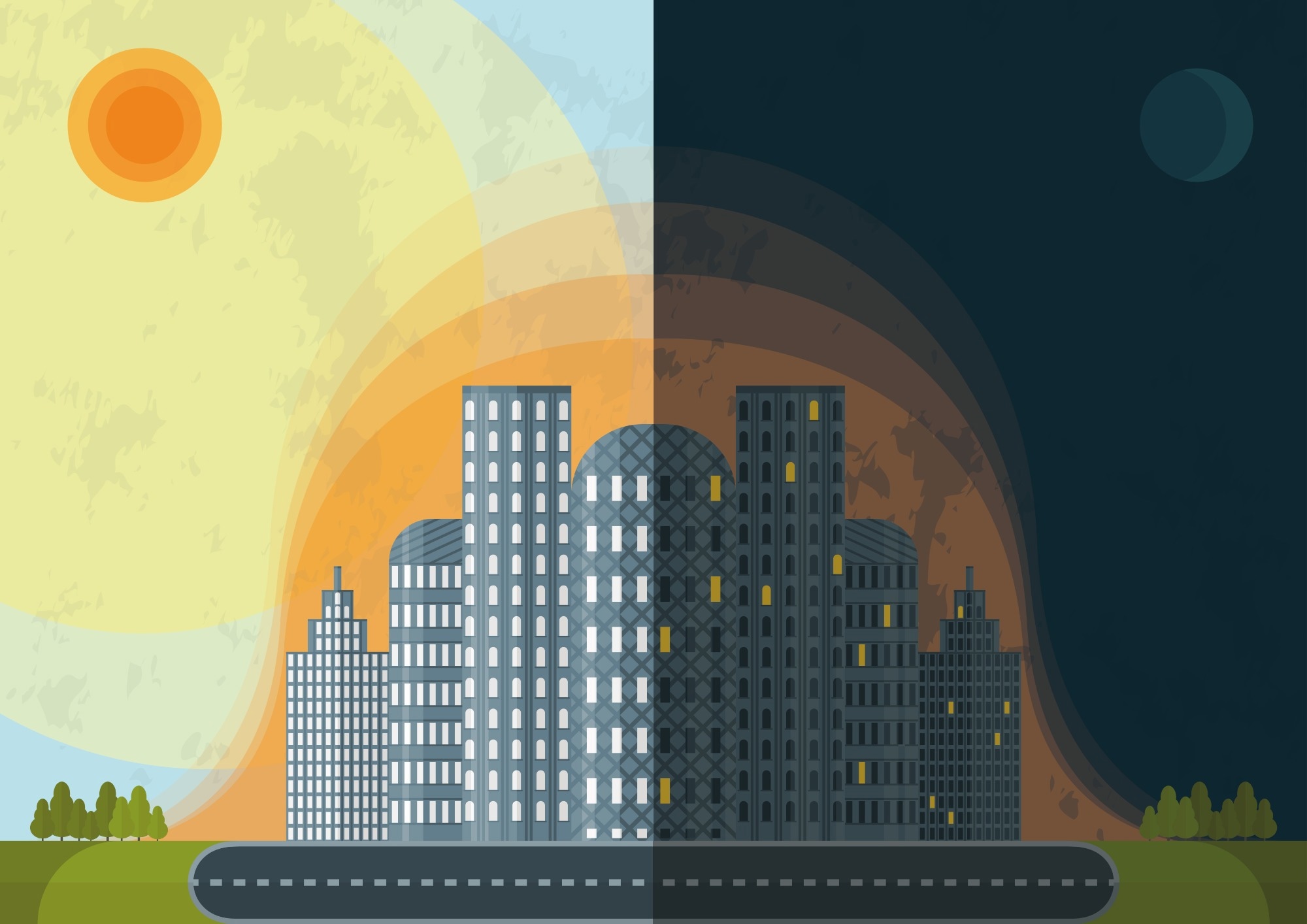Mitigating urban heat and its effects on health and energy consumption is a key challenge in a rapidly urbanizing world. Now, Israeli company SolCold has unveiled a new and innovative solution: solar-powered coatings with passive cooling capabilities.

Image Credit: ValentinaKru/Shutterstock.com
The Urban Heat Island Effect
Climate change is having a tangible impact on both the natural and built environment in the 21st Century. Atmospheric greenhouse gases are at their highest level in human history, according to scientists, and are having a warming effect on the world, which has become startlingly apparent in recent years.
Urbanization has continued apace over the past couple of centuries, with an exponential increase in land coverage being dedicated to a rapidly growing urban population that needs energy to function healthily.
Large swathes of the natural world have been replaced by cities and urban areas globally, with heat-absorbing materials such as asphalt and concrete commonplace. Moreover, urban areas are largely defined by a lack of vegetation, with space dedicated instead to commercial and domestic buildings and transport infrastructure.
The knock-on effect of these factors and urban elements is an increase in temperature in urban areas compared to rural ones. Additionally, increased energy usage and waste heat from AC units in hot months contribute to the increase in heat islands in urban areas.
Heat islands have a negative effect on residents’ health, with a study in The Lancet estimating that around 4% of deaths in cities in summer are attributable to heat islands. Mitigating the effects of increased heat in cities is therefore essential to protect the health of urban populations and decrease strain on health systems.
Furthermore, increased energy consumption increases climate change-inducing greenhouse gas emissions and air pollution in cities, leading to further illness and death and a huge impact on the world’s climate. Innovative solutions to this critical issue are urgently needed.
How Does SolCold Aim to Solve This Issue?
SolCold has come up with a potential solution to the urban heat island effect, which, if employed at scale in urban areas, could improve the health of residents, decrease energy consumption, and aid the transition to a net zero carbon future in line with the UN’s Sustainable Development Goals.
The solution developed by scientists at SolCold involves using cooling coatings to reduce urban heat. These solar-powered coatings can be installed on buildings, roofs, vehicles, and even clothing. This innovative passive cooling system provides significant benefits over conventional electrically-powered devices.
The Product
In appearance a simple film, SolCold’s product is an effective solution to urban heat island effects. According to the company, the material works by reflecting nearly 100% of solar radiation whilst converting heat into visible light and using radiative cooling to release the absorbed heat.
Named “Glacier 110,” SolCold’s product is an opaque, white solid film with a thickness of 350 µm, an area density of 0.3 kg/m2, and is highly durable, lasting for ten years in high-performance applications. The material’s optimal cooling power is 70W/m2 – 170 W/m2 at noon in summertime.
Glacier 110 has four layers: a smart filter that lets 1% of heat pass through it, an anti-stokes layer, a radiative cooling layer, and a mirror layer. The coating maintains a low ambient temperature throughout its entire architecture.
The main benefits of the company’s innovative products include zero electricity and fuel consumption and zero carbon emissions. Furthermore, the films’ robust cooling effect protects underlying substrates and structures from thermal and solar degradation. Used in clothing, it protects the health of the wearer.
Current Projects
Glacier 110 has been used and tested in a number of projects, including on prison buses, with the coating keeping passenger areas at up to 11oC cooler than uncoated vehicles. Volkswagen has also used it on a private car, with similar results.
It has also been evaluated for use in the defense industry, with Elbit using Glacier 110 to keep internal electronics in a camera system 4oC cooler.
Of particular relevance to the issue of urban heat islands is the use of this coating on rooftops. To this end, Capitaland, the largest diversified real estate group in Asia, is testing Glacier 110 on the rooftop of a facility. Results are expected soon and will demonstrate the suitability of SolCold’s product for future urban development.
The Company
SolCold was formed in 2016 to research and develop environmentally friendly outdoor cooling solutions for industry and urban areas. The company envisions a future where passive cooling coatings are widely employed to cool urban areas and improve the sustainability of future development and industry.
The company’s mission is to simplify cooling methods using advanced materials and coatings, thereby significantly reducing the effect of heat islands in cities, which are responsible for driving climate change, air pollution, and significant health impacts on city residents in line with the UN’s Sustainable Development Goals.
Cool Roofs and Islands: Simple Solutions to Protect Cities from Rising Heat
Further Reading and More Information
SolCold (company website) Available at:
https://www.solcold.co/
Disclaimer: The views expressed here are those of the author expressed in their private capacity and do not necessarily represent the views of AZoM.com Limited T/A AZoNetwork the owner and operator of this website. This disclaimer forms part of the Terms and conditions of use of this website.